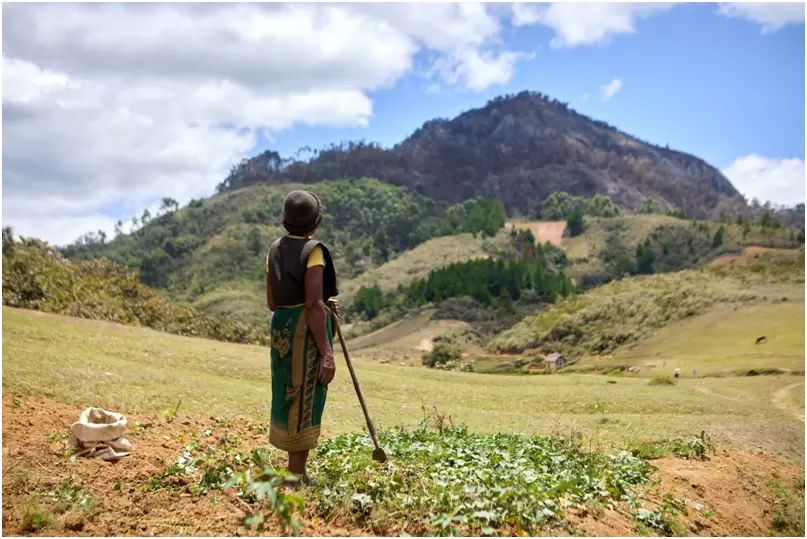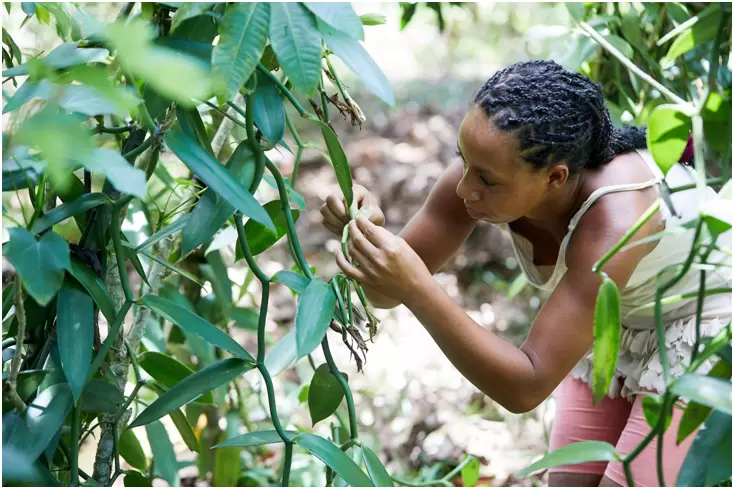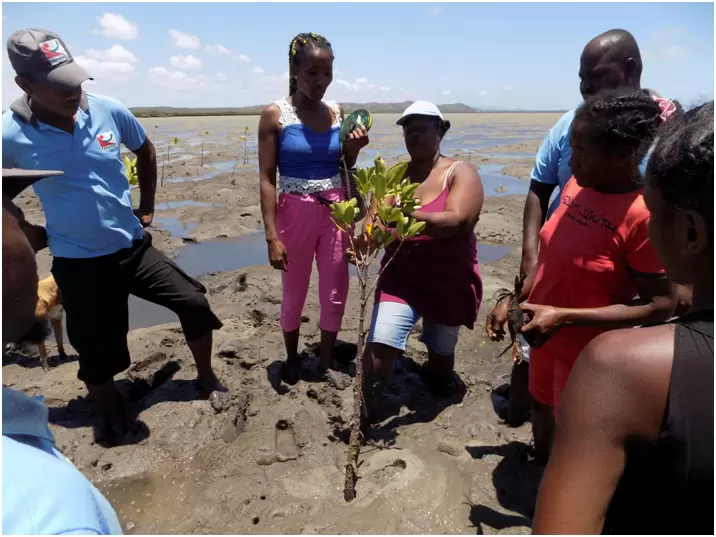
Madagascar is one of the countries most vulnerable to climate change, despite being responsible for only 0.09% of global greenhouse gas emissions. According to the National Climate and Development Report (2024), the country has experienced 35 cyclones, 8 severe floods, and 5 prolonged droughts in twenty years—three times more extreme events than in the previous two decades. The North and Northeast regions are the most affected. And while these phenomena may become less frequent in the coming years, their intensity is likely to increase without appropriate adaptation.
The figures speak for themselves: a 1.6°C rise in temperatures, a 15-20% drop in precipitation, longer dry seasons, more intense rainfall, and a 0.6 cm rise in sea levels per year (World Bank Group, 2024). In the long term, this could lead to a decline in fisheries potential, ocean acidification, and progressive desertification.
In the face of this development, the actions of the Fanamby association in terms of conservation and support for development take on their full meaning.
First, by protecting water supply forests like those of Anjozorobe Angavo, Fanamby allows communities to benefit from a constant supply of water for agriculture. Second, community support always includes a food security component. In Fénérive Est, for example, vanilla producers within the Tambatra social enterprise are receiving support despite the drop in vanilla prices. Fanamby supports Tambatra by engaging with our producers to obtain a better price, which has helped mitigate the economic impacts of this drop. In addition, Fanamby empowers women by supporting market gardening groups and promoting the establishment of community savings systems. These initiatives encourage female entrepreneurship and contribute to greater economic independence within communities.


Furthermore, the restoration of ecosystems, particularly watersheds and mangroves, is also a priority as one of the measures for adapting to climate change. Since 2020, Fanamby has reforested nearly 176 hectares of mangroves with the active involvement of local populations. Mangroves mitigate the impacts of cyclones and ensure the maintenance of fishery resources. Mack Brice, Marine Conservation Manager for the Loky Manambato Protected Area, points out that "After cyclones, we clearly observe that shorelines without mangroves are eroded, while areas covered with mangroves hold up."
Moreover, community management of fisheries resources is part of supporting the blue economy. In several villages, fishermen, accompanied by Fanamby, have set up temporary fishing reserves called tahirin-daoko . The principle is simple: close a fishing area by mutual agreement for several months to give the fish time to reproduce. When it reopens, the reserve is exploited in a reasoned manner, much like withdrawing interest from a savings account, without touching the capital. Today, nine community reserves are active, each managed by a fishermen's association according to rules established by Dina , local laws shared and respected by all. The results are encouraging. Fishermen report an increase in catches, even close to the shore. "Before, we had to go very far to fish. Today, the fish are closer, thanks to these reserves," says a fisherman from the Loky Manambato Protected Area
Finally, women's associations are now ensuring the protection of mangroves. Once withdrawn, these women are becoming agents of change and undertaking new economic activities. Thanks to these dynamics, mangrove felling has significantly decreased. "People have understood their importance," confides a member of one group. These community initiatives reflect a different way of thinking about conservation: an approach rooted in local realities, where biodiversity and human life reinforce each other. For Fanamby, protecting protected areas also means protecting ways of life, know-how, and hope. It paves the way for more resilient communities in the face of tomorrow's climate uncertainties.

Sources:
Fanamby, 2024. Annual Report 2024. Available HERE.
World Bank Group, 2024. National Climate and Development Report for Madagascar. CCDR Series. Available HERE.